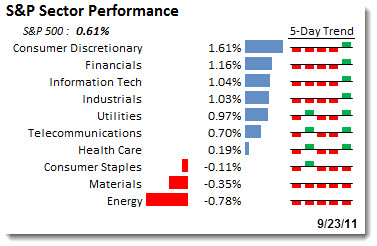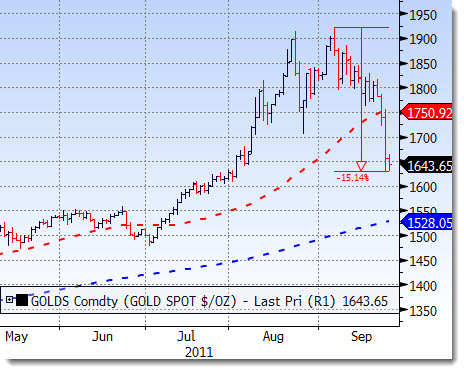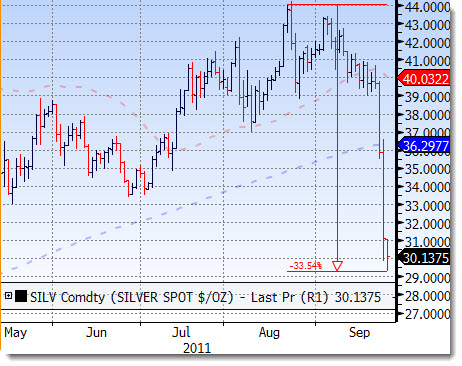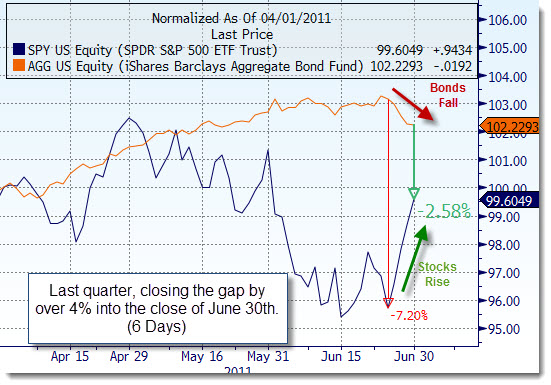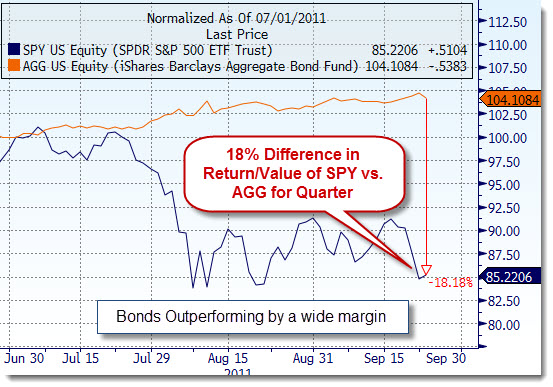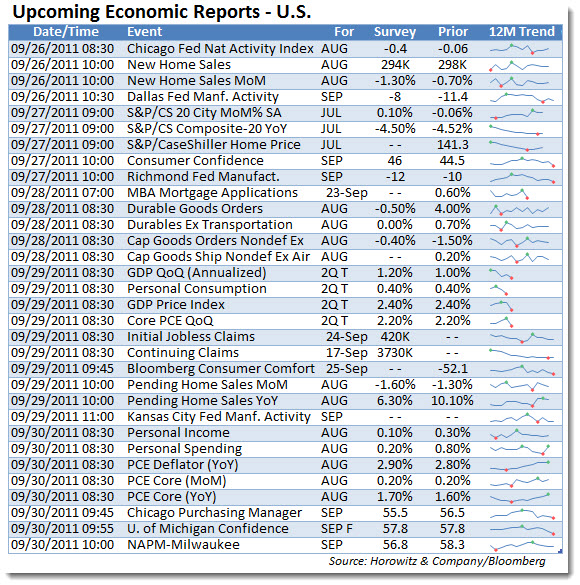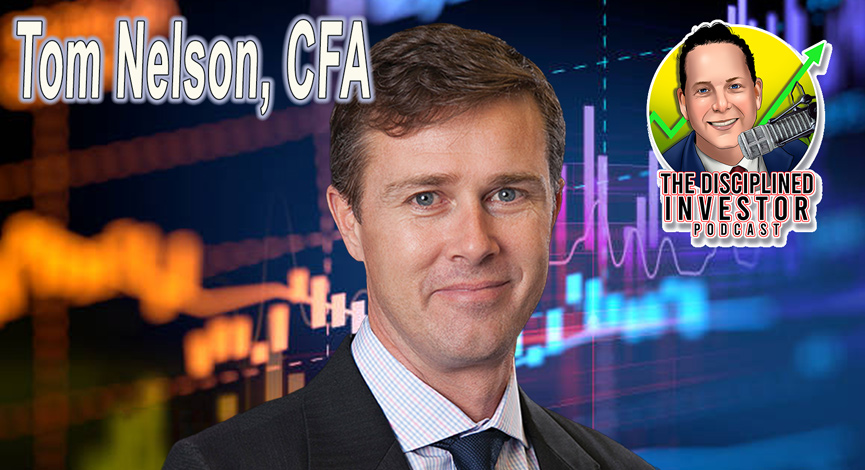During the month of September, we are going to be adding a special section to this site.
The TDI Managed Growth Strategy provides a private “client-only” blog where we discuss the day and our general outlook. Areas that we cover range from current holdings analysis, economic reports, political commentary and more.
The primary purpose of the “client-only” blog is provide information so that clients for whom we manage money will have a better understanding of what is the rationale for portfolio decisions. In addition, the information is designed to be educational so that readers can learn from both our mistakes and successes.
On a daily basis, simply follow www.thedisciplinedinvestor.com or use an RSS reader and point it to : http://tinyurl.com/3u3jahy or http://www.thedisciplinedinvestor.com/blog/category/stocks/insideedition/feed/
2011-09-26
(Link to Last Week’s Update —> HERE)
This week’s TDI Podcast – Barry Ritholtz on Analyst Bias and a Bear Flag Warning (#231)

I do believe that most men live lives of quiet desperation. For despair, optimism is the only practical solution. Hope is practical. Because eliminate that and it’s pretty scary. Hope at least gives you the option of living. (Harry Nilsson)
Looking back on Friday’s market action, most of the buying was within the defensive sectors with the exception of consumer discretionary. Consumer stocks often get a lift when there is pressure on oil prices – and oil prices have been slammed over the past few days as worries over a global recession force commodity bulls to reconsider their positions.
The S&P 500 finished in the green, helped by a last minute surge. Why would there be such optimism when the last few days have been so miserable? For one, the G-20 meeting that was scheduled for the weekend had the potential for an expansion of the ESFS or other plan to help contain the problems plaguing the EuroZone. Some traders did not want to be short against that and others wanted to be ahead on the long side if a miracle was found. The probability was low that a solution would come from the meetings, but optimism can be found in even the most dire of situations.
Recall that it was only a short time ago that there was a fear over hyper-inflation that permeated the minds of those consumed with the excessive devaluation of the U.S. dollar. Now that economies are contracting, that premise is fading. Partly due to a rush to safety (and away from the Euro), the U.S. Dollar and U.S. debt issues have once again become attractive alternatives. The overwhelming number of “dollar bears” created a very lopsided trade and that is now being unwound at a breakneck pace. The effects of this are wide ranging and something that we have been acutely concerned with for months. But, just as with many other over-bought and over-sold market situations, the condition usually lasts far longer than is ever predicted. However, once the trend changes, the action can be fast and disorderly.
We can see this vividly through the price movement of Gold and Silver over the past few days. Both of these precious metals were bought for diversification away from paper currencies as well as a place to park money as the specter of a sovereign default was growing. By all means that makes sense. But, the Gold-Fever was reaching a fever pitch as it had become almost universally the one investment that practically everyone has been talking about.
Silver was also used by many who saw this commodity as both a precious and industrial metal. As the cost per ounce was lower than gold, it was sought as an alternative for those who objected to the $1,500+ price tag for an ounce of gold. As hedge funds have been liquidating stock investment over the past few months, many have added to their precious metal positions – which had been a bright spot in a very tough market condition.
___
Looking to invest in The Disciplined Investor Managed Growth Strategy?
Click HERE for the virtual tour….
___
Once the U.S. Dollar started to rise (and the Euro fell), money managers began to unwind their short USD position, causing them to sell other assets that were used in the spread trade. The common thread that we had seen over the past 18 month was that FED actions would continue to weigh down the value of the USD, causing increasing prices for commodities. So, this is where the rubber finally met the road – that is, the sharp rise of the USD after Operation Twist pushed many to cover positions and sell commodities.
In addition, the overnight comments on Thursday from an EU official who acquiesced about the potential for Greece to default had holders of precious metals looking to quickly liquidate positions. These holders included banks, brokers, money managers, hedge funds, mutual funds and sovereign wealth funds. If a default were to occur, liquidity would be required for those holding sovereign debt of Greece and other European countries.
Even though the working theory is that positions in precious metals would provide some cover in these situations, the rush for liquidity was on and just minutes after the EU news item broke, the price of Gold and Silver (which were higher by 1-2% just before the comments) broke down quickly. The selling intensified throughout the trading day on Friday for both metals. Silver was the hardest hit as it broke through the previous crash low set in MAY!
Franky, we had expected some support at the 200 DMA as this was a level that has been respected going back years. Surprisingly, the breakdown did not have care for any levels as it appears that there is a good amount of disorderly panic selling taking place.
Our strategy for Silver was spot on – up until Friday. We had expected the fall, but then a bounce off of the 200 DMA. That being the case, a call option was purchased at the close on Thursday that was setting up to respond perfectly until the bomb was dropped concerning the “acceptance” of a Greek default. The option was closed for a disappointing loss of 50% on Friday. Overall, last week’s overall option strategy on Silver was profitable, but could have been a good deal better.
In a nutshell, this is the danger of investing when governments are involved in markets. Their need to continually provide commentary, which often contradicts previously stated messages, creates a very unhealthy investing environment. Proceed with caution is the message and lesson here…
There were a slew of economic reports from the EuroZone late last week. Generally, they are looking quite grim:
- An index of French business confidence fell to 99 in September from 102 in August, while the consumer confidence index dropped to 80 from 82.
- Spain‘s producer prices rose 7.1 percent in August from a year earlier after a 7.5 percent gain in July.
- Italy‘s retail sales slipped 0.1 percent in July from June, when they fell 0.3 percent.
- U.K. mortgage approvals climbed to 35,226 in August from 33,734 in July, the British Bankers‘
Association said. - National Bank of Greece and seven other Greek lenders had their credit ratings lowered by Moody‘s on concern over their holdings of the
nation‘s government bonds. - Poland‘s unemployment rate fell to 11.6 percent in August from 11.7 percent in July.
- Slovenia‘s credit rating was cut one level to Aa3 by Moody‘s, which warned another reduction may come on concern the banking system will
need state support. - Australian banks face slower credit growth and weaker asset quality than prior to the global credit crunch three years ago, the Reserve Bank of Australia said.
- New Zealand consumers are less optimistic about their job and earnings prospects, according to a Westpac and McDermott Miller index, which dropped to 104.2 in the third quarter from 106.1 in the second quarter.
- Taiwan‘s industrial production rose 3.88 percent in August from a year earlier after a 3.63 percent gain in July.
- Singapore‘s inflation accelerated to 5.7 percent in August from 5.4 percent in July.
There is a plan that we are going to step into this week, if all of the stars align. Basically we have seen a few reoccurring themes over the years that are may play out. Aside from confidence in the sun rising and setting, there is often an end of month race to the end as money managers chase performance. What this means is that there is a mark-up period near the end of the month that favors an upward bias for stocks within 2-5 days of the final trading day of the month. This is especially the case when stocks underperform bonds Aside from performance, there is a greed factor at work here as some billing cycles will snapshot a portfolio value on the last day of the month and are then used for the basis for management fees. To put it plainly, a higher portfolio value yields a higher fee.
On a quarterly basis the same is true but even further exacerbated by the quarterly billing cycle and a re-balancing process that takes place. This quarter may show a much greater level of rotation out of bonds and into stocks in order to bring portfolios back into alignment. As bonds have outperformed stocks by a wide margin, the “automatic” rebalance may be outsized. (Note: This may be a temporary move as the longer and shorter trend is still down)
Art Cashin, a veteran floor trader put out a note on Friday that is very insightful:
The current economic situation is clearly deteriorating in the U.S and around the world. The ECRI Weekly Index is continuing to fall and that is starting to come into recession levels. The week ahead has some important reports, including important manufacturing numbers out of China.
The bottom line: There is no reason to get too excited about trying to call a market bottom at this point. Several factors are colliding at once making this a very difficult environment to predict. There are also technical patterns that have emerged (a head and shoulders on the daily charts as well as a BEAR FLAG that has been confirmed) providing the potential for a technical breakdown of equity markets all the more likely.


